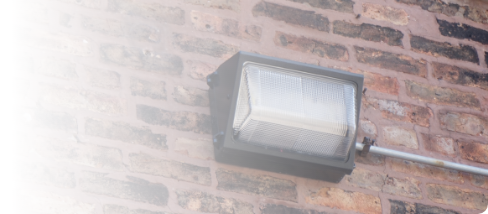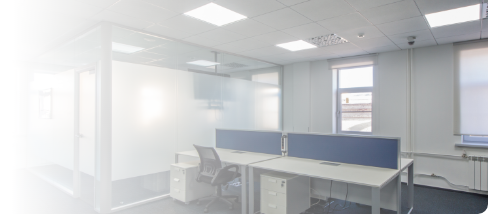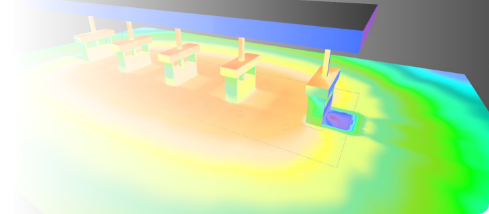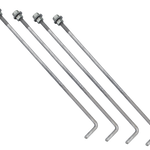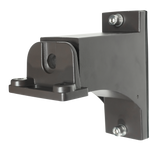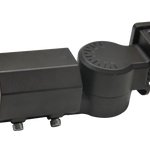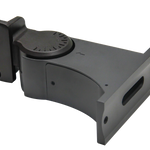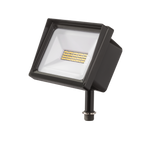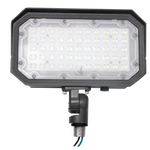You have no items in your shopping cart.
When it comes to commercial lighting, not all fixtures are created equal. Depending on the unique demands of your space, the strategic selection of lighting types can significantly impact visibility, productivity, safety, and energy efficiency. Among the numerous decisions to make is whether to opt for high bay or low bay lighting fixtures.
That's where we come in. Armed with decades of experience and industry insights, we at Jarvis Lighting are here to guide you through the maze of commercial lighting, specifically exploring high bay and low bay fixtures, their applications, and how to choose between them. So let's shed some light on this critical aspect of your business.
What is High Bay Lighting?
High bay lighting fixtures are designed for spaces with high ceilings typically above 20 feet. These specialized fixtures illuminate vast areas efficiently and evenly. They have a narrow beam angle, typically between 60 to 90 degrees, allowing for light to penetrate downwards over long distances without significant dispersion.
Think of warehouses, large retail spaces, gymnasiums, factories, and indoor sports facilities. In such spaces, high bay lighting fixtures are the unsung heroes, ensuring every square foot is illuminated, allowing for safe and productive operations.
See our collection of high bay lighting fixtures here: https://www.jarvislighting.com/collections/high-bay-and-warehouse-lighting
What is Low Bay Lighting?
On the other hand, low bay lighting fixtures are best suited for spaces with lower ceilings typically below 20 feet. They are characterized by a wider beam angle, usually 90 to 120 degrees, allowing for optimal illumination over a broad area closer to the fixture. Places like workshops, garages, small retail stores, and general purpose spaces are where low bay lights shine, creating a well-lit environment conducive to efficient and safe operations.
Differences Between High Bay and Low Bay Lights
1. Mounting Height
High bay lights are installed at heights typically exceeding 20 feet, hence the name 'high bay'. They are adept at providing ample light from high points, minimizing shadows and creating a well-lit environment. Conversely, low bay lights are designed for mounting at heights below 20 feet. They diffuse light over a smaller area, but the brightness remains concentrated due to the fixture's proximity to the floor.
2. Beam Angle and Light Distribution
High bay lights have a narrower beam angle, ranging from 60 to 90 degrees. This design allows them to focus light directly below, ideal for illuminating vertical surfaces and objects in high-ceiling environments. Low bay lights, however, have a wider beam angle, typically 90 to 120 degrees. This wide angle enables them to distribute light evenly across a broader surface area, perfect for low-ceiling spaces where light needs to be diffused more widely.
3. Light Intensity
With great height comes the need for greater light intensity. High bay fixtures are typically more intense than low bay fixtures to ensure that the light reaches the floor effectively. In contrast, low bay lights can afford to have lower light intensities due to their closer proximity to the ground.
4. Design and Construction
The design and construction of these fixtures reflect their distinct applications. High bay lights are often larger, heavier, and have robust heat management systems due to their high lumen output. Low bay fixtures, on the other hand, are typically compact, lightweight, and easier to install and maintain. They also generate less heat due to their lower lumen output.
5. Applications
High bay lights are ideally used in large, open spaces with high ceilings, such as warehouses, factories, and gymnasiums. Low bay fixtures excel in smaller, enclosed spaces with lower ceilings, like workshops, garages, or small retail stores.
Factors to Consider When Choosing High Bay vs Low Bay Lighting
Ceiling Height and Space Configuration
When choosing between high bay and low bay lights, the first factor to consider is your space's ceiling height. High ceilings above 20 feet call for high bay lights, while ceilings below 20 feet are better suited for low bay lights.
Lighting Requirements for Different Commercial Applications
Every business has unique lighting needs, which play a significant role in the choice of lighting fixtures. A warehouse, for instance, requires high-intensity, evenly distributed lighting to ensure visibility for operations and safety. In contrast, a boutique may need softer, more diffused light to create a warm and welcoming environment.
Safety and Compliance Considerations
When choosing between high bay and low bay fixtures, always ensure compliance with local and industry-specific lighting standards and safety regulations. Sufficient illumination is crucial for employee safety, reducing the risk of accidents. Additionally, some industries require specific light levels for various tasks, and selecting the appropriate fixtures can help your business meet these requirements.
Frequently Asked Questions
What are the typical mounting heights for high bay lighting installations?
High bay lights are typically mounted at heights exceeding 20 feet. This height can go up to 45 feet or more depending on the specific requirements of the space.
When should I consider using low bay lighting fixtures instead of high bay fixtures?
Consider using low bay fixtures when the ceiling height of your space is below 20 feet and when the lighting needs to be spread over a wide area, such as in workshops or smaller retail stores.
Are high bay fixtures more energy-efficient than low bay fixtures?
The energy efficiency of a fixture is primarily determined by the type of bulb used, rather than whether it's a high bay or low bay fixture. LED high bay fixtures, like those available at Jarvis Lighting, are exceptionally energy-efficient and cost-effective in the long run.
What are the advantages of using high bay lighting in large open spaces?
High bay lighting provides effective illumination over large areas from high mounting points. This eliminates dark spots and shadows, ensuring uniform visibility. They're also adept at illuminating vertical surfaces, which is crucial in places like warehouses and manufacturing facilities.
Where can I purchase commercial and industrial high bay lighting fixtures?
You can purchase commercial and industrial high bay lighting fixtures from reputable suppliers like us at Jarvis Lighting. We offer a diverse range of high-quality, energy-efficient LED high bay fixtures suitable for a variety of applications.
See our High Bay and Warehouse Lighting collection here.
